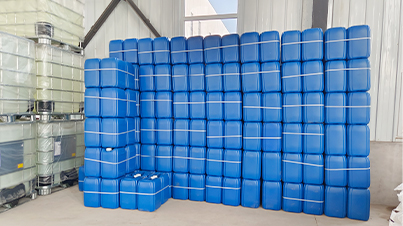Synthesis and Applications of Dodecyl Dimethyl Benzyl Ammonium Chloride in Industry
Understanding Dodecyldimethylbenzylammonium Chloride An Overview of Its Properties and Applications
Dodecyldimethylbenzylammonium chloride, often abbreviated as DDBAC, is a quaternary ammonium compound that has garnered significant attention for its wide-ranging applications across various industries. This compound is particularly known for its surfactant properties, which make it valuable in both industrial and consumer products. By exploring its chemical characteristics, mechanisms of action, and various applications, we can appreciate why DDBAC holds a prominent place in modern chemistry and manufacturing.
Chemical Properties
DDBAC is categorized as a cationic surfactant due to its positively charged ammonium ion. Its molecular formula is C21H38NCl, indicating that it contains a long alkyl chain (dodecyl group) attached to a dimethylbenzylammonium moiety. The long hydrophobic carbon tail grants the compound its surfactant properties, allowing it to effectively reduce surface tension. The presence of the quaternary ammonium group enhances its solubility in polar solvents, enabling it to interact with various substances in both aqueous and non-aqueous environments.
DDBAC is known for its stability, resistance to degradation, and compatibility with other surfactants, which makes it a popular choice in formulations that require durability and effectiveness. Its antimicrobial properties are another significant aspect, making it a suitable candidate for applications in hygiene and sanitation.
Applications
One of the primary applications of DDBAC is as a disinfectant and biocide. Its effective antimicrobial action against bacteria, fungi, and viruses positions it as an essential ingredient in disinfectants used in healthcare settings, food processing industries, and household cleaning products. In these applications, DDBAC works by disrupting the microbial cell membrane, leading to cell lysis and death.
dodecyldimethylbenzylammonium chloride

In addition to its antimicrobial properties, DDBAC is extensively used in the formulation of personal care products, such as shampoos and conditioners. Its ability to condition hair while providing anti-static properties makes it desirable in the cosmetic industry. The compound improves the overall texture and appearance of hair, as it helps to remove dirt and oil while retaining moisture.
DDBAC is also utilized in the formulation of fabric softeners and laundry detergents. As a surfactant, it aids in the removal of stains and enhances the softness of fabrics. Its effectiveness at low concentrations allows formulators to create products that are cost-effective without sacrificing performance.
Beyond personal care and cleaning products, DDBAC finds applications in the oil and gas industry, where it is used as a corroding inhibitor and a dispersant. Its ability to stabilize emulsions and suspensions allows for better management of drilling fluids and formulations, which are critical in oil extraction processes.
Environmental Considerations
While DDBAC has proven useful in many applications, it is essential to evaluate its environmental impact. As a synthetic surfactant, there are concerns regarding its biodegradability and potential toxicity to aquatic life. Responsible use, proper disposal, and ongoing research into eco-friendly alternatives are crucial steps that industries must consider to minimize negative environmental effects.
Conclusion
Dodecyldimethylbenzylammonium chloride is a multifaceted compound with diverse applications spanning various sectors, including healthcare, personal care, cleaning, and industrial processes. Its surfactant and antimicrobial properties make it a vital ingredient in many formulations, while its effectiveness and stability are driving factors behind its widespread use. However, as industries continue to leverage DDBAC's advantages, it is equally important to remain vigilant regarding its environmental footprint, ensuring that its benefits do not come at the cost of ecological integrity. As research continues to evolve, finding a balance between utility and environmental responsibility will be key to the future use of compounds like DDBAC.
-
Water Treatment with Flocculant Water TreatmentNewsJun.12,2025
-
Polymaleic AnhydrideNewsJun.12,2025
-
Polyaspartic AcidNewsJun.12,2025
-
Enhance Industrial Processes with IsothiazolinonesNewsJun.12,2025
-
Enhance Industrial Processes with PBTCA SolutionsNewsJun.12,2025
-
Dodecyldimethylbenzylammonium Chloride SolutionsNewsJun.12,2025





